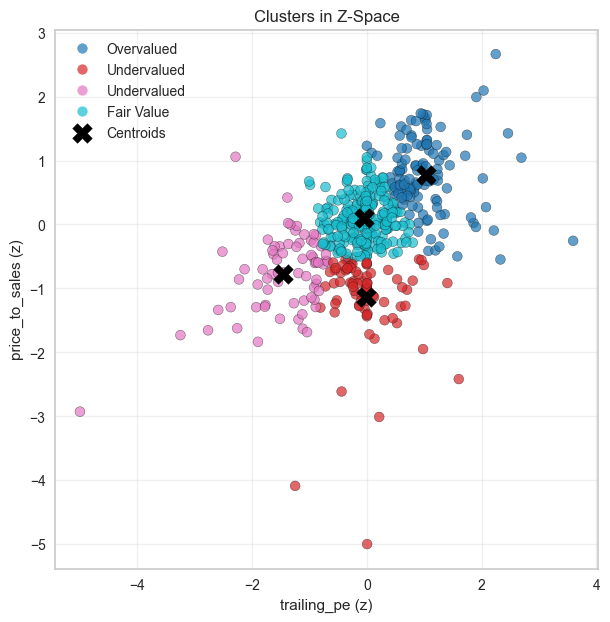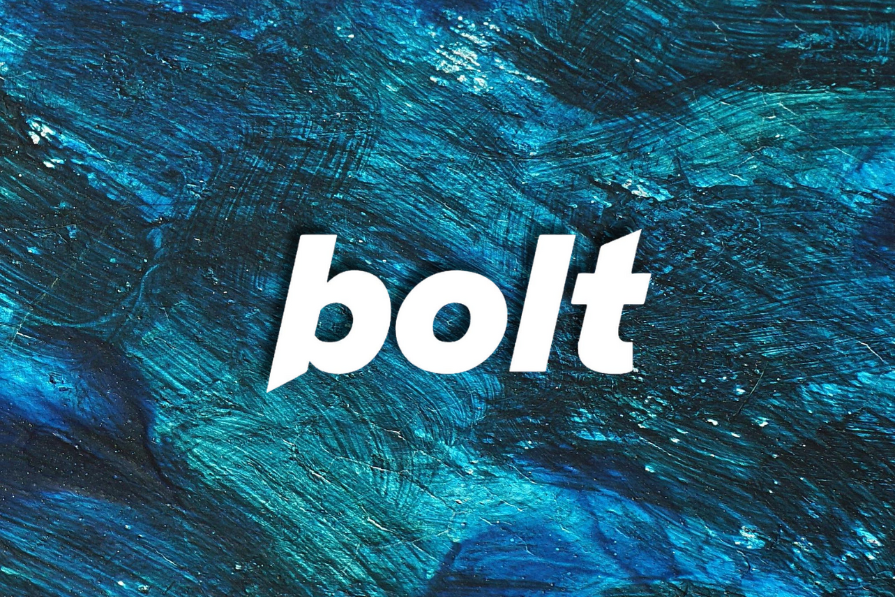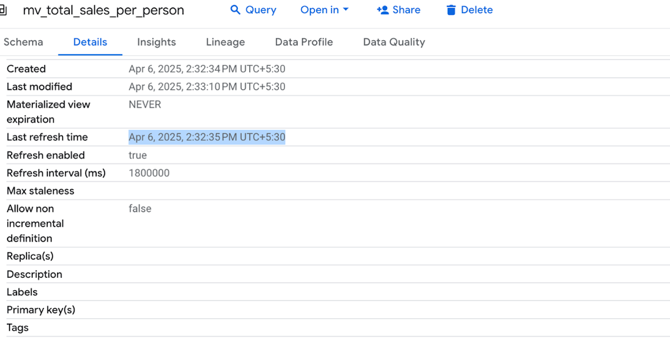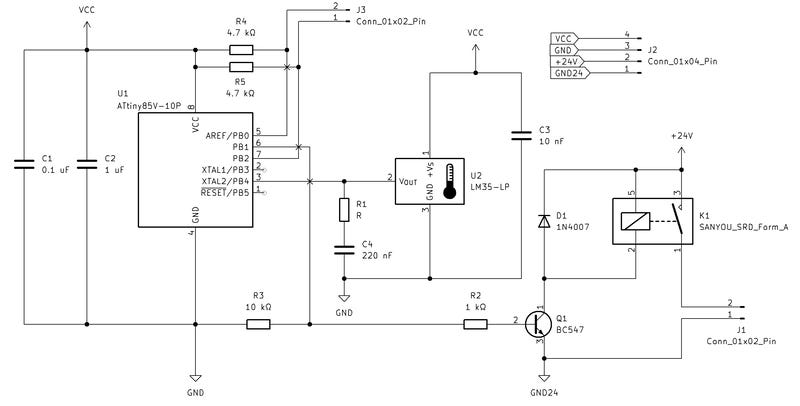Programming News
Medium
250

Image Credit: Medium
From Fundamentals to Factor Buckets : A K-Means Clustering Approach to Stock Styles
- Investors often face information overload, leading to analysis paralysis and sub-optimal decisions.
- The mismatch between individual investors' thinking and how data is presented by screeners is a significant issue.
- A K-Means clustering approach was used to categorize S&P 500 companies into intuitive 'styles' like Undervalued, High Growth, etc.
- The project focuses on capturing five core factor themes: Value, Growth, Quality, Defensive, and Momentum & Risk.
- Data cleaning steps involved imputing sector medians, transforming skewed distributions, sector-neutral robust scaling, and winsorizing outliers.
- Feature selection was based on Spread Ratio, and metrics with spread ratio > 4% were kept for clustering.
- The number of clusters for each factor bucket was determined using elbow analysis, Silhouette score, and Davies–Bouldin index.
- Clusters were labeled based on their characteristics, making the model output actionable and easy to interpret for investors.
- The model's performance was tested using hypothetical investor personas and equal-weighted mini-portfolios.
- The results suggested that the factor buckets captured distinct investment styles with varying performance.
Read Full Article
15 Likes
Medium
620

Image Credit: Medium
Secure APIs Without JWT: Alternatives You Should Know About
- JWT is commonly used for API authentication but can create more problems than it solves.
- Developers often struggle with JWT's quirks, security pitfalls, and algorithm complexity.
- There are excellent alternatives to JWT that may be better suited for specific use cases.
- Exploring API authentication beyond JWT is crucial to understanding when to use other methods.
- JWT, while not inherently bad, has weaknesses like algorithm confusion.
- Many developers have fallen victim to attacks due to JWT's flexibility, such as the 'algorithm switching' attack.
- Instances of leaked secrets like API keys due to JWT misconfigurations have been significant.
Read Full Article
23 Likes
Dev
373

Image Credit: Dev
Behind the Scenes of Netflix: Unpacking Its World-Class Infrastructure
- Netflix's world-class infrastructure handles over 260 million subscribers and billions of hours of content monthly, relying on cloud-native architecture and a custom CDN for global delivery.
- Evolution: Originating as a DVD rental service, Netflix transitioned to AWS in 2008 for scalability and resilience, moving to a microservices-based ecosystem.
- Architecture: Netflix operates entirely on AWS, utilizing services like EC2, S3, RDS, DynamoDB, and CloudFront for deployment, storage, and content delivery.
- Microservices: Netflix runs over a thousand microservices that communicate through REST, gRPC, and Kafka for scalability and decoupling.
- Video Pipeline: Netflix's streaming pipeline encodes videos in various formats, optimizing content delivery through a custom CDN called Open Connect for low latency.
- Personalization: Netflix leverages machine learning for personalized recommendations, conducting extensive A/B testing to enhance user experience.
- Observability: Netflix ensures reliability through chaos engineering tools like Chaos Monkey, and monitoring systems like Atlas, Zipkin, and ELK Stack.
- Global Availability: Netflix deploys across AWS regions, smartly routing requests to nearest servers for low latency and adaptive streaming.
- Developer Tooling: Netflix empowers developers with Spinnaker and Titus for safe deployments, and follows strict security measures for data protection.
- Conclusion: Netflix's infrastructure showcases cloud-native engineering excellence, providing insights for building scalable and intelligent systems.
Read Full Article
22 Likes
Dev
50

Image Credit: Dev
Unlock Your React Potential: 20 Must-Have Resources Beyond the Obvious!
- This article presents 20 exceptional resources to enhance React.js skills beyond the basics, including courses, interactive platforms, GitHub repositories, and essential tools for React developers.
- Courses like 'The Complete Intro to React v9' by Brian Holt, 'Epic React' by Kent C. Dodds, and freeCodeCamp's React Course offer in-depth learning experiences.
- GitHub repositories like 'Awesome React' and 'React Patterns' provide curated lists and examples for enhancing React knowledge and understanding design patterns.
- Useful resources like 'React Testing Library' for testing, 'TanStack Query' for data management, and 'Reactiflux Discord Community' for networking are highlighted.
- The article concludes with recommendations for essential tools and communities every React developer should explore.
Read Full Article
3 Likes
Discover more
- Software News
- Web Design
- Devops News
- Open Source News
- Databases
- Cloud News
- Product Management News
- Operating Systems News
- Agile Methodology News
- Computer Engineering
- Startup News
- Cryptocurrency News
- Technology News
- Blockchain News
- Data Science News
- AR News
- Apple News
- Cyber Security News
- Leadership News
- Gaming News
- Automobiles News
Logrocket
84

Image Credit: Logrocket
How to build and deploy a web app with Bolt
- Building a web app with Bolt.new, an AI-powered web development agent, makes creating full-stack applications quick and effortless.
- Bolt.new eliminates the need for extensive tool setup, offering a complete development environment accessible through simple conversational prompts.
- Frontend developers can use Bolt.new to prototype big ideas quickly, even without advanced coding skills.
- The article provides insights on utilizing Bolt.new, from token usage and AI prompt enhancement to best practices for effective prompts.
- Detailed prompting with Bolt.new ensures better results and minimizes token consumption.
- The process of building and deploying a web application with Bolt includes specifying design features, tech stack, functionalities, and code structure.
- Integrating Supabase for authentication, database queries, and protected routes is discussed for extending the functionality of the web app.
- The article also mentions Bolt.new features like live coding, code highlighting, and deployment options.
- Bolt.new's pricing tiers and alternatives like Lovable and v0 by Vercel are outlined for comparison.
- In conclusion, Bolt provides frontend developers with an efficient tool to bring their app ideas to life swiftly through detailed and structured prompts.
Read Full Article
5 Likes
Self-Learning-Java
416

Auto-Refresh for Materialized Views in BigQuery: Configuration and Best Practices
- Materialized views in BigQuery improve query performance by precomputing query results.
- Auto-refresh is essential for maintaining data freshness in materialized views.
- Materialized views refresh within five minutes of base table changes in BigQuery.
- BigQuery imposes a minimum refresh interval of 30 minutes to protect performance.
- Auto-refresh can be enabled during view creation or using the ALTER statement.
- Custom refresh intervals can be set between 1 minute and 7 days.
- Shorter refresh intervals are suitable for real-time accuracy requirements.
- Frequent refreshes for large tables can increase costs.
- Monitoring job history in BigQuery helps in tracking refresh frequency.
- Scheduled queries can provide more control than auto-refresh for materialized views.
- Configuring auto-refresh optimally ensures data freshness without compromising performance.
Read Full Article
25 Likes
Self-Learning-Java
254

Image Credit: Self-Learning-Java
Manually Refreshing Materialized Views in BigQuery: When and How to Do It
- Materialized views in BigQuery help optimize performance by precomputing and storing query results.
- BigQuery offers a way to manually trigger a refresh of materialized views for immediate data updates.
- Reasons for manual refresh include needing to reflect recent changes, running tests, or verifying fixes.
- To manually refresh a materialized view in BigQuery, use the system procedure BQ.REFRESH_MATERIALIZED_VIEW.
- Example syntax: CALL BQ.REFRESH_MATERIALIZED_VIEW("project_id.dataset_id.materialized_view_name");
- Manually refreshing updates the view with the latest data.
- To check the last refresh time of a materialized view: SELECT last_refresh_time FROM INFORMATION_SCHEMA.MATERIALIZED_VIEWS WHERE table_name = 'your_view_name';
- Materialized views enhance performance, and manual refresh provides control over updates when necessary.
Read Full Article
15 Likes
Self-Learning-Java
348

Image Credit: Self-Learning-Java
What Are Labels in Prometheus Alerts?
- Labels in Prometheus alerting rules are key-value pairs that provide additional information to alerts, helping categorize, route, and filter them.
- Labels can be used to categorize alerts based on severity, route alerts to specific teams or channels, and group alerts in tools like Alertmanager, Grafana, or Slack.
- Alert rules in Prometheus include labels like severity: critical to indicate the importance level of an alert.
- Multiple labels can be added to an alert rule to make it more descriptive and informative, such as team and region information.
- Labels assist in alert routing by specifying where to send alerts (email, Slack, PagerDuty, etc.), whether to silence or group alerts, and which team should respond.
- Examples of label-based alert routing include sending critical alerts belonging to the infra team to the slack-infra channel.
- In Prometheus alerting rules, labels are crucial for indicating the severity, team responsible, and environment context of alerts.
- By using labels effectively, users can manage alert notifications, routing, and responses more efficiently within Prometheus.
Read Full Article
20 Likes
Logrocket
114

Image Credit: Logrocket
How agile became a checkbox exercise, and how to get unstuck
- Agile was born with the promise of making teams faster, more adaptive, and more aligned, but has lost its edge over time.
- Many organizations treat agile as a checkbox exercise, leading to stagnation and lack of progress.
- Rituals and ceremonies in agile can become hollow when driven more by habit than reflection.
- Symptoms of process fatigue include backlog bloat, fake velocity, low morale, and ceremony saturation.
- Diagnosing the root causes of agile dysfunction involves addressing process inertia, misunderstood metrics, and detached ceremonies.
- Treating the agile process as a product can lead to improved outcomes and a focus on learning over metrics.
- Reimagining agile involves prioritizing outcomes over outputs, learning over velocity, and clarity over cadence.
- The team's involvement and co-creation of the agile process are essential for its success.
- Resetting agile in phases through auditing, prioritizing, experimenting, and scaling can lead to improvement.
- Agile should prioritize impact over imitation, focusing on solving real problems and delivering meaningful products.
- The key is to approach agile with intentionality, fostering a culture of reflection, honesty, and adaptability.
Read Full Article
6 Likes
Medium
2.6k

Image Credit: Medium
The Future of Software: When Apps Are Born from Words, Not Code
- Software development is evolving to allow apps to be created from plain English instructions, rather than traditional coding, making it more accessible for non-developers.
- New tools like Bolt.dev, Cursor, and v0.dev enable users to generate fully functional apps quickly by pasting plain English 'recipes' into the platforms and deploying them.
- Apps are shared as intentions rather than code, allowing for customization and personalization based on individual preferences.
- Users can remix apps by adding prompts for additional features like Stripe payments, analytics dashboards, or Slack integration, creating unique versions with AI assistance.
- AI models like GPT-4o, Claude 3 Opus, DeepSeek, and LLaMA 3 interpret prompts to build apps with different styles and functionalities tailored to users' needs.
- This revolution extends beyond software development to reshaping the creation of various content like images, music, and films by describing vision instead of coding.
- Clarity of thought and articulating ideas effectively through prompts are becoming the new essential skills for rapid app creation.
- The future of software development emphasizes idea articulation over memorizing code, enabling anyone with curiosity and clarity to participate in app creation.
- While the concept may seem futuristic, the progression of tools like GitHub, no-code platforms, and AI advancements is making the vision of creating software with simple conversations more feasible.
- The future of software creation is facilitated by the ability to input prompts to generate apps, marking a shift towards a more accessible and inclusive development process.
Read Full Article
4 Likes
Dev
561

Image Credit: Dev
Android Developer Mode Guide: How to Enable It, Best Settings, and Tips to Become an Android Developer
- Android Developer Mode is a hidden feature on Android devices that unlocks advanced tools primarily used by developers.
- Enabling Developer Mode involves tapping 'Build number' 7 times in the 'About phone' section of Settings.
- Key developer options to explore include USB Debugging, Stay Awake, Limit Background Processes, Show Taps & Pointer Location, Force GPU Rendering.
- The Android operating system was developed by Android Inc., and later acquired by Google in 2005, leading to the widespread use of Android globally.
- To become an Android developer, one needs to learn Java or Kotlin, install Android Studio, understand the Android SDK & API, build small projects, and publish apps on Google Play Store.
- Joining tech communities like Reddit, GitHub, and Stack Overflow can further enhance learning and networking opportunities for aspiring Android developers.
- Understanding Android Developer Mode is crucial whether you're curious about Android's inner workings or aiming to create your own apps.
Read Full Article
8 Likes
Dev
1.3k

Image Credit: Dev
What is No-Code App Building?
- No-code app building has revolutionized the tech world by allowing people to create apps without traditional programming code.
- Using visual tools, individuals can create fully functional applications by clicking, connecting, and configuring components.
- No-code platforms like Bubble, Airtable, Glide, and Adalo have democratized app development, making it more accessible and intuitive.
- Benefits of no-code app building include faster development, reduced need for hiring engineers, and affordability of tools.
- Real-world examples of no-code use cases include mobile apps for lead capturing, scheduling tools for schools, and gamified learning platforms.
- Popular tools in the no-code landscape include Bubble for web apps, Glide for mobile apps, and Airtable for database logic.
- Limitations of no-code include potential performance bottlenecks under scaling and vendor ecosystem dependencies.
- AI integration is speeding up the no-code development process, aiming to make software creation even more accessible.
- The cultural impact of no-code app building is shifting towards a world where building is as common as posting online, emphasizing creativity over coding skills.
- No-code app building empowers individuals to bring their ideas to life without being hindered by a lack of coding expertise, marking a new era where everyone can be a builder.
Read Full Article
20 Likes
Medium
369

Image Credit: Medium
I Tried 15+ Web Scraping Tools — Here’s the Only One I’d Trust for Big Data Projects
- Web scraping tools have become essential for obtaining data, especially for AI-related projects.
- Illegal data scraping is not permissible, necessitating the use of legitimate tools.
- Bright Data is highlighted as a standout web scraping tool suitable for various purposes.
- The recommended steps for utilizing Bright Data include signing up on their website for free credits.
- Bright Data offers comprehensive functionalities and resources for efficient data scraping.
- The tool is particularly useful for eCommerce, SERP tracking, AI model data, and market research.
- Documentation and resources like webinars and videos aid in understanding how to use Bright Data.
- Users can start for free with available credits and later manage funds for extended usage.
- Bright Data's Web Scraper API library is instrumental in scraping specific data from platforms like LinkedIn, Instagram, and Amazon.
- The 'Agent Browser' product facilitates running and controlling browsers online with advanced features.
- Bright Data automates processes such as solving CAPTCHAs, handling detection avoidance, managing headers and cookies.
- For non-coders, Bright Data offers user-friendly tools and no-code solutions, making it accessible to all.
- Bright Data maintains compliance with legal standards and is used by notable Fortune 500 companies.
- Customers can access ready-to-train data, ideal for AI projects, and benefit from regular updates.
- Support, including 24/7 chat assistance, is available for users encountering scraping issues.
- Overall, Bright Data is highly recommended for business growth and AI model training endeavors.
Read Full Article
22 Likes
Medium
110

Image Credit: Medium
IoT Architectures Under Pressure
- Despite the readiness of technology and clear benefits, the anticipated boom in IoT integration has not fully materialized.
- The cost of smart devices poses a significant barrier to adoption, with expenses extending throughout the lifecycle.
- Challenges like connectivity, interoperability, and high prices hinder the seamless integration of smart devices.
- Exploration of alternative solutions and shared resources in IoT development can enhance efficiency and usability.
- Reimagining smart device development by pooling resources and adopting edge computing could streamline operations and reduce redundancy.
- The proposed firmware-less approach aims at consolidating resources and improving device cohesiveness.
- Implementing centralized control, shared UI frameworks, and edge computing could optimize smart home management.
- Transitioning to thin clients connected to a central hub for processing mirrors the concept of cloud gaming, enhancing efficiency.
- The approach focuses on sustainability, efficiency, and utilizing existing tools for a seamless IoT architecture.
- The article series 'IoT Architectures Under Pressure' explores practical implementations of efficient smart device development strategies.
Read Full Article
6 Likes
Alvinashcraft
174

Dew Drop – June 19, 2025 (#4443)
- GitHub Copilot introduces Copilot Spaces to bring contextual suggestions.
- Uno Platform Team discusses building Cross-Platform Media Applications in .NET with MediaPlayerElement.
- MSSQL Extension for VS Code now supports Local Containers and GitHub Copilot Agent Mode.
- Azure Developers delve into AI Agents with MCP.
- Windows 365 and Azure Virtual Desktop enhance business resilience and security.
- TypeScript introduces support for the new class Iterator at the type level.
- Pulumi ESC now allows Bring Your Own Keys.
- Deno 2.3 adds support for Local NPM Packages.
- EF Core Query Hacks are shared to boost app performance.
- OCI Artifacts are chosen by Docker for AI Model Packaging.
Read Full Article
10 Likes
For uninterrupted reading, download the app